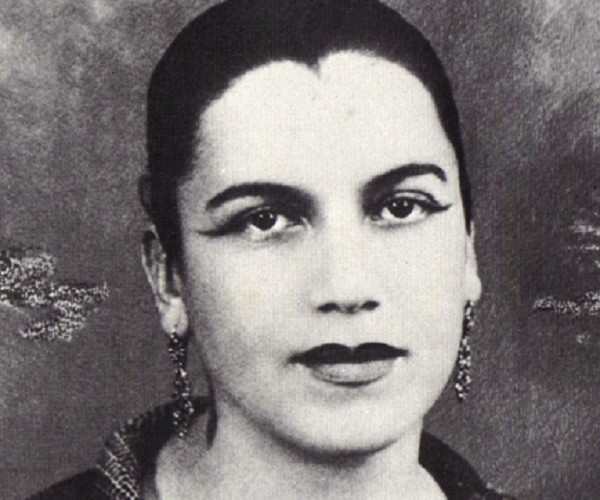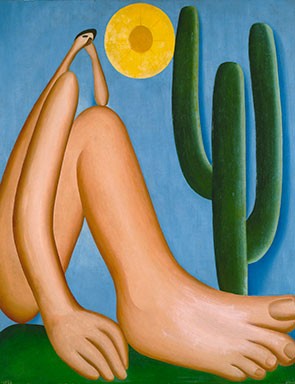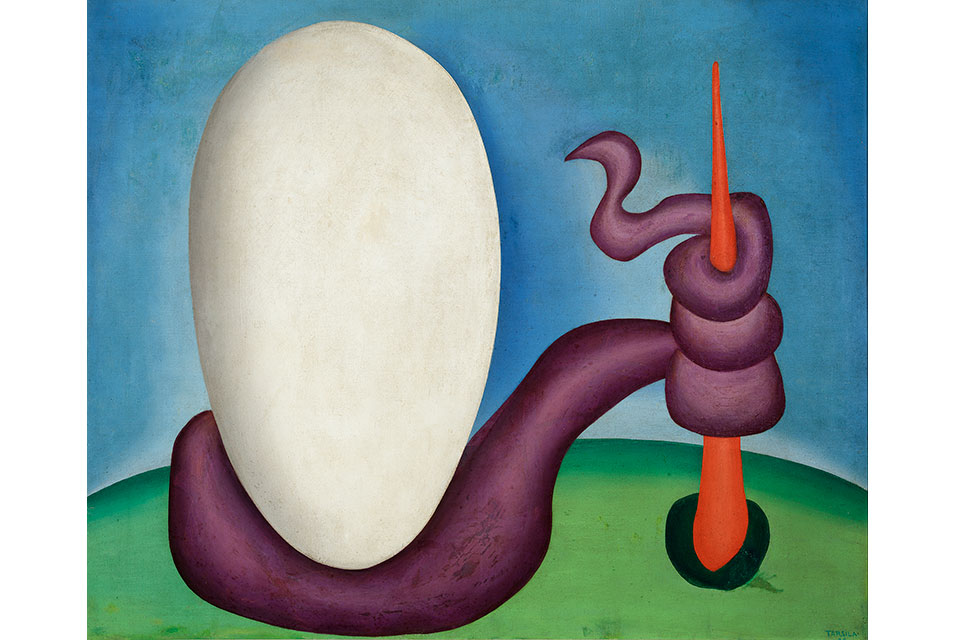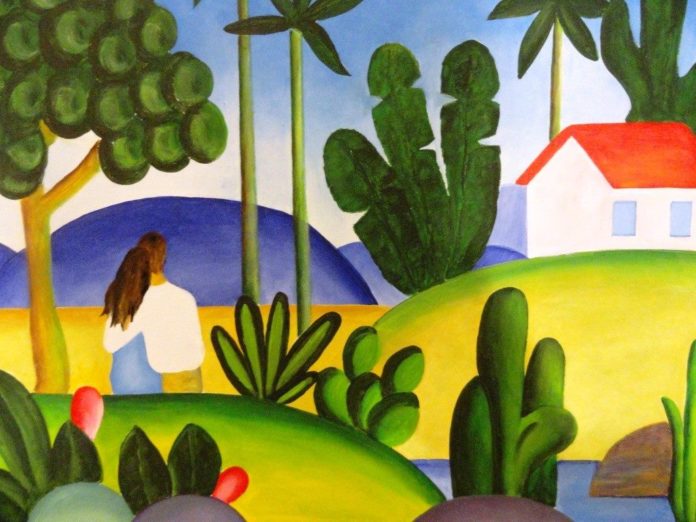 With Tarsila do Amaral: Inventing Modern Art in Brazil, The Museum of Modern Art and the Art Institute of Chicago will present the first exhibition in North America exclusively dedicated to the pioneering work of Tarsila do Amaral (Brazilian, 1886–1973), one of the greatest Brazilian artists of the 20th century. On view at The Museum of Modern Art from February 11 through June 3, 2018, the exhibition will focus on Do Amaral’s pivotal production from the 1920s, tracing the path of her groundbreaking contributions through approximately 130 works, including paintings, drawings, sketchbooks, and photographs drawn from collections across the United States, Latin America, and Europe. Tarsila do Amaral: Inventing Modern Art in Brazil is organized by The Museum of Modern Art and the Art Institute of Chicago, by Luis Pérez-Oramas, former Estrellita Brodsky Curator of Latin American Art, The Museum of Modern Art, and Stephanie D’Alessandro, former Gary C. and Frances Comer Curator of International Modern Art, the Art Institute of Chicago; with Karen Grimson, Curatorial Assistant, Department of Drawings and Prints, The Museum of Modern Art, and Katja Dominique Rivera, Research Associate, Department of Modern and Contemporary Art, the Art Institute of Chicago. Prior to its presentation at The Museum of Modern Art, the exhibition will be on view at the Art Institute of Chicago from October 8, 2017, through January 7, 2018.
With Tarsila do Amaral: Inventing Modern Art in Brazil, The Museum of Modern Art and the Art Institute of Chicago will present the first exhibition in North America exclusively dedicated to the pioneering work of Tarsila do Amaral (Brazilian, 1886–1973), one of the greatest Brazilian artists of the 20th century. On view at The Museum of Modern Art from February 11 through June 3, 2018, the exhibition will focus on Do Amaral’s pivotal production from the 1920s, tracing the path of her groundbreaking contributions through approximately 130 works, including paintings, drawings, sketchbooks, and photographs drawn from collections across the United States, Latin America, and Europe. Tarsila do Amaral: Inventing Modern Art in Brazil is organized by The Museum of Modern Art and the Art Institute of Chicago, by Luis Pérez-Oramas, former Estrellita Brodsky Curator of Latin American Art, The Museum of Modern Art, and Stephanie D’Alessandro, former Gary C. and Frances Comer Curator of International Modern Art, the Art Institute of Chicago; with Karen Grimson, Curatorial Assistant, Department of Drawings and Prints, The Museum of Modern Art, and Katja Dominique Rivera, Research Associate, Department of Modern and Contemporary Art, the Art Institute of Chicago. Prior to its presentation at The Museum of Modern Art, the exhibition will be on view at the Art Institute of Chicago from October 8, 2017, through January 7, 2018.
 A foundational figure in the history of modern art in Latin America, Do Amaral was born in São Paulo at the turn of the 19th century. She studied piano, sculpture, and drawing before leaving for Paris in 1920, where she attended the Académie Julian. She studied with André Lhote, Albert Gleizes, and Fernand Léger, ultimately arriving at her signature painterly style, using synthetic lines and sensuous volumes to depict landscapes and vernacular scenes in a rich color palette. In January 1928 she painted Abaporu—an elongated, isolated figure with a blooming cactus—which inspired the Anthropophagous Manifesto, written by Do Amaral’s husband, the modernist poet Oswald de Andrade, and quickly became a banner for this transformative artistic movement that sought to overcome outside influences and make an art for and of Brazil itself. By the 1960s and 1970s, a new generation of artists had rediscovered both Antropophagy and Do Amaral’s art. The subjects and motivations behind her body of work were revisited by artists such as Lygia Clark and Hélio Oiticica, followed by the generation of artists associated with the Tropicália movement, such as Caetano Veloso and Gilberto Gil. Today, nearly 90 years after the production of Abaporu, Do Amaral’s art remains a compelling testimony of a pivotal chapter in Latin American modernism.
A foundational figure in the history of modern art in Latin America, Do Amaral was born in São Paulo at the turn of the 19th century. She studied piano, sculpture, and drawing before leaving for Paris in 1920, where she attended the Académie Julian. She studied with André Lhote, Albert Gleizes, and Fernand Léger, ultimately arriving at her signature painterly style, using synthetic lines and sensuous volumes to depict landscapes and vernacular scenes in a rich color palette. In January 1928 she painted Abaporu—an elongated, isolated figure with a blooming cactus—which inspired the Anthropophagous Manifesto, written by Do Amaral’s husband, the modernist poet Oswald de Andrade, and quickly became a banner for this transformative artistic movement that sought to overcome outside influences and make an art for and of Brazil itself. By the 1960s and 1970s, a new generation of artists had rediscovered both Antropophagy and Do Amaral’s art. The subjects and motivations behind her body of work were revisited by artists such as Lygia Clark and Hélio Oiticica, followed by the generation of artists associated with the Tropicália movement, such as Caetano Veloso and Gilberto Gil. Today, nearly 90 years after the production of Abaporu, Do Amaral’s art remains a compelling testimony of a pivotal chapter in Latin American modernism.
Serving as a long-overdue introduction to this major Brazilian modernist for North American audiences, the exhibition will highlight the artist’s production from the 1920s and her critical contributions to the birth of modern art in Brazil. Combining a chronological display with a thematic approach, the exhibition will survey Do Amaral’s career, from her earliest Parisian works, to the emblematic modernist paintings produced upon her return to Brazil, ending with her large-scale, socially driven works of the early 1930s. Central to the exhibition is the reunion of three landmark paintings: The Black Woman (A Negra) (1923), Abaporu (1928), and Antropophagy (Antropofagia) (1929), a transformational series of works that were last exhibited jointly in North America in 1993, in the MoMA exhibition Latin American Artists of the Twentieth Century.
 The exhibition will also include the first work by Do Amaral to enter the Museum’s collection, the recently acquired Study for Composition (Lonely figure) III [Estudo de Composição (Figura só) III] (1930), together with the painting Lonely figure (1930). The drawing is the last in a series of sketches prefiguring the painting, which reflects Do Amaral’s increasingly synthetized surrealist bent and marks the culmination of the most prolific decade in her production. In the drawing, a lonely figure with hair blowing in the wind stands with her back to the viewer, evoking a sensation of melancholia. That year, the artist’s marriage to Oswald de Andrade ended, and, with the collapse of the Brazilian economy and her family’s economic losses, she took a job as the first-ever cataloguer at São Paulo’s Pinacoteca do Estado, concluding her rich artistic production of the 1920s.
The exhibition will also include the first work by Do Amaral to enter the Museum’s collection, the recently acquired Study for Composition (Lonely figure) III [Estudo de Composição (Figura só) III] (1930), together with the painting Lonely figure (1930). The drawing is the last in a series of sketches prefiguring the painting, which reflects Do Amaral’s increasingly synthetized surrealist bent and marks the culmination of the most prolific decade in her production. In the drawing, a lonely figure with hair blowing in the wind stands with her back to the viewer, evoking a sensation of melancholia. That year, the artist’s marriage to Oswald de Andrade ended, and, with the collapse of the Brazilian economy and her family’s economic losses, she took a job as the first-ever cataloguer at São Paulo’s Pinacoteca do Estado, concluding her rich artistic production of the 1920s.
The exhibition will be accompanied by a richly illustrated catalogue, presenting Do Amaral’s paintings, drawings, letters, and photographs and offering a full overview of this critical period in her career. Essays by Luis Pérez-Oramas and Stephanie D’Alessandro examine the artist’s production from the 1920s and her long-lasting legacy, and are accompanied by an illustrated documentary section, a translation of critical texts, a chronology, and an extensive bibliography.

























